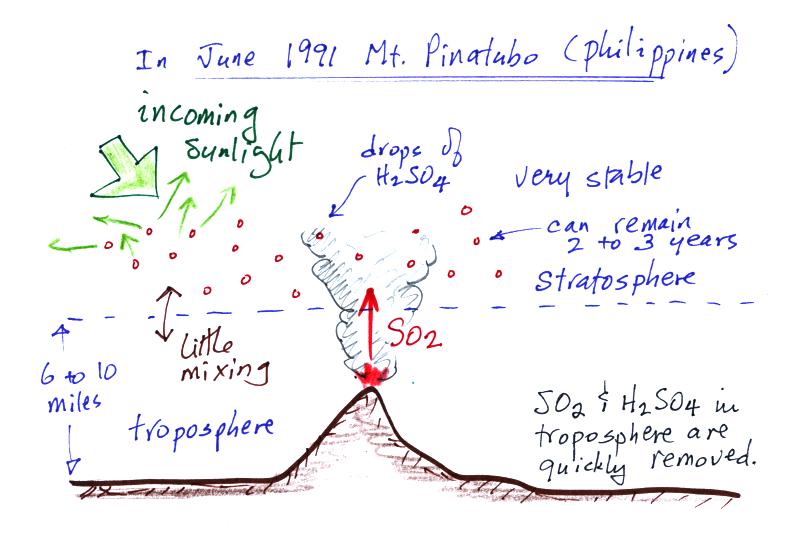click here to download
this page in a more printer friendly format
In class I briefly mentioned "the year
without a summer" that occurred in 1816 near the end of the Little
Ice Age . The cooling was apparently caused largely by the 1815
volcanic eruption of Mt. Tambora, one
of the largest eruptions in recorded history.

The reason why strong volcanic eruptions (such as the fairly
recent 1991 Mt
Pinatubo eruption in the Philippines) cause a short time change in
climate (short term cooling) is shown in the figure above. A
strong eruption is capable of sending SO2 gas into the stable
stratosphere (in a weaker eruption the SO2 would remain in the
troposphere where it could be removed). The SO2 can form sulphate
particles (SO4) or small drops of sulfuric acid (H2SO4). These
particles and drops scatter
and reflect incoming sunlight. A decrease in the
amount of sunlight reaching the ground causes cooling. Because
the stratosphere is stable the particles can remain for a few
years.
A nuclear war or an asteroid impact on the earth could have a similar
effect (see nuclear
winter). In that case dark particl es of dust and soot would
be sent up into
the stratosphere where they would absorb sunlight.
This would
prevent the sunlight from reaching the ground and cause a drop in
surface temperatures. The absorption of sunlight would also warm
the stratosphere creating very stable atmospheric conditions and making
it harder to remove the particles from the atmosphere.

